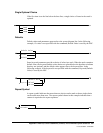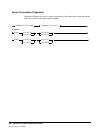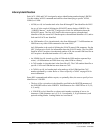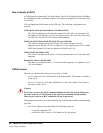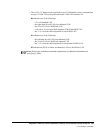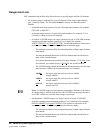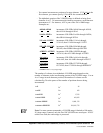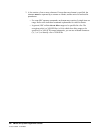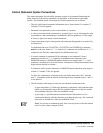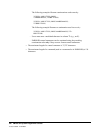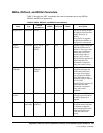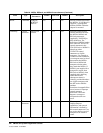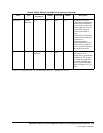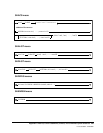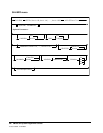
Appendix A. Macros, Control Statements, Utilities, and Commands Syntax Reference 439
1st ed., 6/30/04 - 312579601
Control Statement Syntax Conventions
The control statement for each utility program consists of a command (indicating the
utility function) followed by parameters, as applicable, in 80-character card-image
records. The standard syntax conventions for control statements are as follows:
• The only valid control statement information area is from column 2 to column 72.
Columns 73-80 are ignored.
• Parameters are separated by one or more blanks or a comma.
• A value is associated with a parameter by an equal sign (=) or by enclosing the value
in parentheses, and concatenating it immediately after the parameter. # Case (upper
or lower) is ignored in actual control statements.
• Control statements may be interspersed with comments designated by an asterisk (*)
in column one.
For definition data sets (VOLATTRs, UNITATTRs and TAPEREQs) comments
must be in the new format (/*...*/). Asterisk (*) comments are not allowed. A /*...*/
comment in the first line is not required for definition data sets.
• A control statement is terminated if the statement is not continued. Control
statements must have a /*...*/ comment as the first control statement in the
PARMLIB member. A PARMLIB member that does not begin with a /*...*/ style
comment is assumed to be in the old format. Comments in old format members must
begin with an asterisk in column 1.
In contrast to utility control statements, PARMLIB control statements may begin in
column 1. Columns 73-80 are ignored.
To allow for continuation, comments in the job stream must start with /* and end
with */. Comments cannot be nested, and mixing the two comment styles (* and /*)
is not allowed.
• The 80-character card-image records use conventional continuation rules.
- A space and a dash (–) following a parameter or parameter value indicates that a
blank is to be inserted between the last nonblank character of this line and the
first nonblank character of the next nonblank record.
- A plus sign (+) specifies that the continued control information is to be
concatenated directly after the character preceding the plus sign. The continued
data starts at column two of the next nonblank record.
Note: You can use a continuation only after a new keyword or after the natural
end of a value. Some examples follow.



